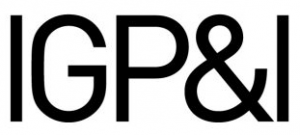As wind-assisted propulsion is gaining traction as a means to decarbonize, there are contractual issues that should be sorted to avoid potential disputes between shipowners and charterers.

Wind-assisted propulsion: Charterparty considerations
Written by
Jade Park
Published 05 November 2024
While the industry continues its search for fuels that have less GHG emissions, the age-old method of utilising wind to propel ships is starting to come back into use with newer designs and technology. This is certainly a welcome development, but with new equipment comes new risks and responsibilities. If the risks are not adequately addressed in a charterparty, the good intentions to go green could quickly turn into a red-hot dispute. This article considers the impact of fitting wind-assisted propulsion systems (WAPS) on contractual arrangements between shipowners and charterers.
Time charterparties
Under a typical time charterparty, shipowners have the duty to maintain the ship whilst charterers have the obligation to provide and pay for fuel. This general position should not change due to the installation of WAPS. However, there are some specific issues that may arise from its installation which both parties should consider. Here are some of the contractual issues that should be considered when entering into a time charterparty:
Description of the WAPS installed. There are a number of different types of WAPS in the market. A full description of the type of wind propulsion, its capabilities, and when it can be used will help avoid any confusion and disputes. The description should also include details of what impact it may have, including any reduction in fuel use that may be achieved and in what conditions (this is likely to supplement the speed and consumption warranty). Also consider the WAPS’ impact on the vessel’s air-draft and if it may restrict the vessel’s berthing or other operations.
Installation. If the system is to be installed whilst the vessel is operating under a charterparty, the parties should determine who will pay the cost since this may have an impact on the ongoing hire rate. Further, the parties should consider how the benefits will be allocated. If there are joint contributions to the cost, how will that cost be allocated when the charterparty comes to an end?
Maintenance and repairs. Where shipowners and charterers have shared the cost of installing wind propulsion, the charterparty should clearly set out who is to be responsible for the cost of any periodic maintenance and/or repairs (including any loss of time). Otherwise, the default position will likely be that the burden lies with shipowners under the general maintenance clause.
Breakdown or malfunction. The parties should consider what is to happen if the WAPS breaks down or malfunctions. This will likely require the ship to burn more fuel to continue the voyage, or for the vessel to proceed at a slower speed to achieve the same consumption. The charterparty should clarify which party is to bear the cost of the additional fuel burned or time taken. It should also set out whether the breakdown or malfunction is an off-hire event and if so, how it should be calculated. Another alternative to off-hire could be to have two rates of hire; one for when the system is in use and another for when it is not available for certain agreed reasons. Also consider what rights the owners or charterers may want to have as regard performance during a period of breakdown. For example, if the propulsion system was expected to reduce fuel consumption by 10% in certain conditions, should owners have the right to reduce speed in order to achieve the same consumption?
Performance warranties. The wind propulsion will be installed with the aim to improve the ship’s fuel consumption and possibly its speed as well. The ship’s performance warranties may therefore need updating where wind propulsion is being retrofitted. It may also be necessary to have separate warranties for when the wind propulsion has broken down and the ship is solely propelled by conventional fuel. If different warranties are given for different weather conditions, then consider where evidence of the weather conditions is to be taken. The system may have sophisticated sensors that are more likely to be accurate of the real weather conditions than a weather routing company.
Voyage charterparties
Under voyage charterparties, matters related to bunkers and maintenance typically rest with shipowners. As such, there are fewer implications for voyage charterparties if installing wind propulsion. However, there are some matters that the parties may wish to consider:
Vessel description. It may be necessary to consider whether the WAPS restricts the ports/berths that the vessel can use.
Laytime/demurrage provisions. The running of laytime/demurrage may be disrupted by the breakdown or malfunction of the wind propulsion. Any provisions in the charterparty pertaining to laytime/demurrage, including exceptions to laytime or demurrage running, may need to be adjusted to address what is to happen in such an event.
Due dispatch obligations. Parties should determine what rights they want to have in the event of the breakdown of the WAPS on a voyage. Must the vessel increase the engine’s speed to make up for lack of extra propulsion, or is it permissible for the vessel to slow down to achieve the same emissions without being in breach of the due dispatch obligation?
We are here to help
Even with the best of intentions and modern technology, things can go wrong. Given that the re-introduction of wind propulsion on ships is a relatively recent phenomenon, it is even harder to anticipate all the challenges that shipowners or charterers may face. However, by staying updated on the technology and incidents, and by having carefully drafted clauses in place, the chance of a substantial dispute can be minimised.
We are always happy to assist our Members with claims, contract reviews or loss prevention advice. If shipowners or charterers have any queries or concerns regarding their path to a greener future, whether it is a claim, legal or a loss prevention issue, please do not hesitate to contact us to help make your voyage smoother and greener.
The author thanks Louis Shepherd and Neil Henderson for their assistance with this article
Additional resources
Wind propulsion: opportunities and new risks (gard.no) (includes a description of the existing wind assist propulsion systems)
Getting Ready for FuelEU Maritime (gard.no) (includes a description of the “wind reward factor” for WAPS which is applied to reduce the overall GHG intensity of the energy used).




